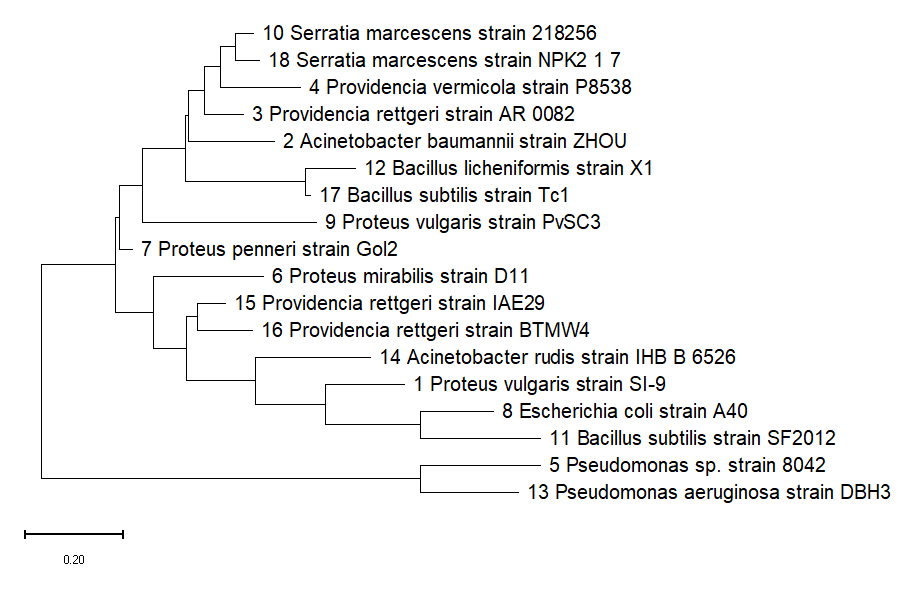Microbial properties of Hibiscus sabdariffa processed through different thermal methods
Keywords:
Hibiscus, Thermal processing, Microbial propertyAbstract
Comparative analysis of the microbial properties of Hibiscus sabdariffa calyces and leaves (Red variety) was subjected to different thermal drying methods: electric oven, infrared oven, and sun drying was conducted using standard analytical and molecular techniques. The study revealed significant differences (p<0.05) in microbial loads, with sun drying exhibiting the lowest heterotrophic bacterial load at 3.56 ± 0.13 log10 CFU/g, compared to the electric oven and infrared drying methods, which recorded bacterial loads of 3.82 ± 0.35 and 3.85 ± 0.14 log10 CFU/g, respectively. Similarly, sun drying yielded a fungal count of 3.60 ± 0.43 log10 CFU/g, indicative of a differential impact of drying methods on fungal contamination levels. Oven drying of leaf samples uniquely identified Vibrio at 2.00 ± 0.1 log10 CFU/g, highlighting a potential safety concern associated with this method. Through sequencing analysis, a diverse microbial spectrum was identified, including Proteus vulgaris strain SI-9, Acinetobacter baumannii strain ZHOU, Providencia rettgeri strain AR_0082, and Pseudomonas aeruginosa strain DBH3, among others. These findings underscore the necessity of selecting appropriate drying methods to mitigate microbial risks effectively. Phylogenetic analysis delineated the genetic relationships among the isolates, reflecting their potential ecological origins and emphasizing the influence of anthropogenic activities on microbial diversity in processed food products. The comparative assessment of drying methods in this study advocates for enhanced processing protocols to ensure the microbial safety of Hibiscus sabdariffa, aligning with global food safety standards and promoting consumer trust in the quality of dried botanicals.

Published
How to Cite
Issue
Section
Copyright (c) 2024 Fatunla, O.K., Igoche, K.O., Alonge, A.F., Udofia, U.S., Oladejo, A.O., Udoh, M.E., Akpan, M.G.

This work is licensed under a Creative Commons Attribution 4.0 International License.



